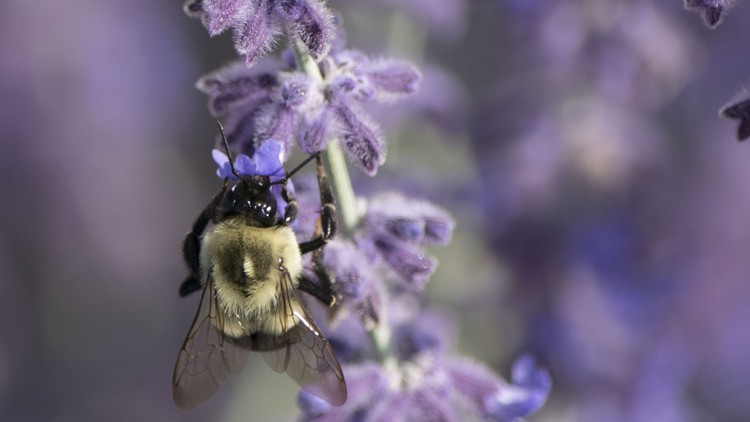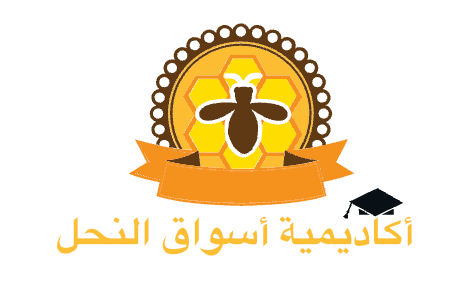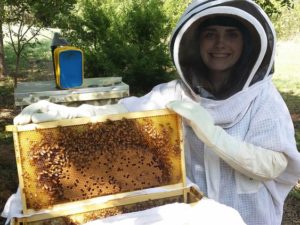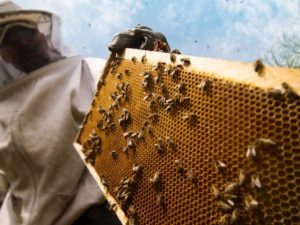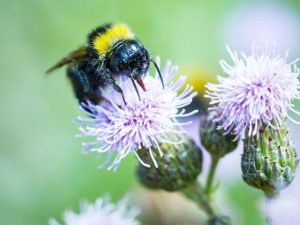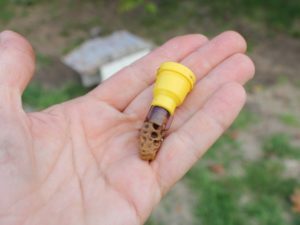تمهيد عن الحشرات الاجتماعية
- وصف
- المناهج الدراسية
- التعليمات
- المراجعات
The social insects include the bees, ants, wasps and termites. They are called social because they assemble into large colonies of sterile workers that support the excessive reproduction of a relative, usually a parent. These insects present a conundrum, because their form of sociality involves foregoing reproduction to aid the reproduction of another: what is known as reproductive altruism. Because our theories of evolution are based upon successful reproduction, this is a puzzle. You will learn how scientists think they have solved the puzzle, and you will learn a lot of fascinating stuff about these insects along the way.
-
1Welcome to A primer on social insects!درس الفيديو.
Hello! Welcome to this short introduction to the social insects. The social insects form large colonies of sterile workers and comprise the bees, ants, wasps and termites. These insects pose one of the most puzzling problems in biology today: how could such complex societies arise from foregoing reproduction? In this course, you will learn who the social insects are, something about their evolutionary history, and the two radical ideas scientists have used to explain this perplexing insect group.
-
2Course organizationدرس الفيديو.
Here, I outline the structure of the lectures, and tell you a little about what to look out for in the videos to follow. It will help you keep focused on what is important.
-
3Who (and what) are the social insects?درس الفيديو.
In this lecture, I will introduce you to the social insects, which includes the bees, ants, wasps, and termites. The social insects are highly specialized group of insects, and their behavior and organization poses many challenges to the way we think about evolution, the nature of the organism, and behavior. I will introduce you to who the social insects are, and some of the characteristics of them, including the organization into colonies of sterile workers that support the reproduction of a fertile male and female. I will also introduce you to the grades of sociality, ranging from simple associations, to the reproductive specialization and overlap of generations that make the social insects distinct.
-
4Evolution of the social insectsدرس الفيديو.
The social insects have a diverse evolutionary and taxonomic history. The ants, bees and wasps are members of the insect order Hymenoptera, which arose during the late Jurassic and early rotations periods. Within that group, sociality has emerged independently several times. The termites, in contrast, are members of the order Isoptera, which are derived from cockroaches, and first arose as truly social insects at the beginning of the Mesozoic. Despite this diverse evolutionary history, all the social insects exhibit remarkable convergence of traits, including large numbers of sterile workers supporting the reproductive activities of fertile parents, considerable overlap of generations, formation of castes, division of labor, and many other attributes. This remarkable evolutionary convergence calls for an explanation.
-
5Kin selection and evolution of socialityدرس الفيديو.
The remarkable evolutionary convergence seen among the social insects demands some sort of explanation. What sorts of evolutionary and selective forces led to the development of these remarkable social systems? In particular, how could social systems evolve in which individuals, sterile workers in this case, forgo their own reproduction to favor the reproduction of others? One of the dominant theories that supposedly explains the evolution of sociality, and with it the evolution of reproductive altruism, as it’s been called, is a theory called kin selection, in which an individual’s fitness can be advanced either by reproducing himself, or by advancing the reproduction of related individuals. In the case of the social insects, the theory of kin selection has been expanded to a broader theory of inheritance known as inclusive fitness. In the case of the Hymenopteran social insects, sociality is supposedly favored by a peculiar mode of sex determination found among this group of insects. This pattern of sex determination is known as haplodiploidy, which makes sisters were closely related to one another than they are to their parents, or to perspective offspring. This makes the inclusive fitness of individuals greater when they devote their lives to forcing their mothers to make sisters.
-
6Kin selection and altruismدرس الفيديو.
The test of any theory is whether it can be disproven, and the theory of inclusive fitness stands or falls on the basis of how will nature conforms to its predictions. In the case of the Hymenoptera, the test comes when sterile workers assert their own reproductive interests over the interests of their nest mates. Here, inclusive fitness is favored by the irreversibility of sterility in the workers. Once a worker has become sterile, there’s no going back. However they can control the reproductive fate of the sisters through the use of substances like royal jelly. In this instance, this shows the Queen to be the reproductive slave of her offspring just as one would expect if inclusive fitness was the explanation for sociality in these creatures. The test because more problematic in the termites, however, which do not have haplodiploid sex determination, and workers that can reverse their sterility, and breakout as reproductive individuals on their own. Here, sociality seems to be determined not so much by genetic predisposition, but by the enforcement of the social nutrition among these wood eating insects.
-
7Social insects and the superorganismدرس الفيديو.
There is another theory for the origin of sociality that differs radically from the genetic selection arguments of inclusive fitness and kin selection. This is the theory that social insects form a kind of super organism, in which one sees attributes that are very similar to those that one sees in an organism, attributes like specialization, differentiation, coordination of behavior of the individuals making up the collective, and so forth. Social insects are in fact but one example of a number of biological phenomena that we can call organism like systems, things like symbiotic organisms, ecosystems, and of course organisms themselves. This forces us to take a radical look at the nature of the organism, and the origin of organism like attributes. Defined physiologically, the social insects behave remarkably like organisms, including the regulation of energy intake at the colony level as opposed to energy intake at the individual level. The similarity between the physiology of the colonies and actual organisms is surprising and startling.
-
8Symbiosis and the superorganismدرس الفيديو.
Termite colonies also behave as superorganisms, but in this instance, there organism like behavior is more diverse than it is in the ants bees and wasps. In particular, termites are social because they are symbiotic organisms, that is they rely upon a dietary symbiosis with a variety of different microorganisms that are capable of digesting their cellulose food. Termite colonies does provide a unique test of the super organism idea, because some termite colonies are more organism like than others. The question then becomes what is it that drives a social system toward being organism like?
-
9The termite superorganismدرس الفيديو.
Termite colonies become more organism like as the symbiotic associations upon which they depend become more elaborate and interwoven. Termites rely on symbionts not only to digest their woody diet, but also to process rare nutrients like nitrogen in ways that benefit the termites and symbionts mutually. This is shown most remarkably in advanced termites that cultivate fungi. These termites produce massive wood composting operations that convert their woody diet into enriched materials that are easier to digest and richer in nitrogen. These tightly woven physiological interactions impose a high degree of organism like behavior on these creatures, including the development of unique organs of colonial physiology.
